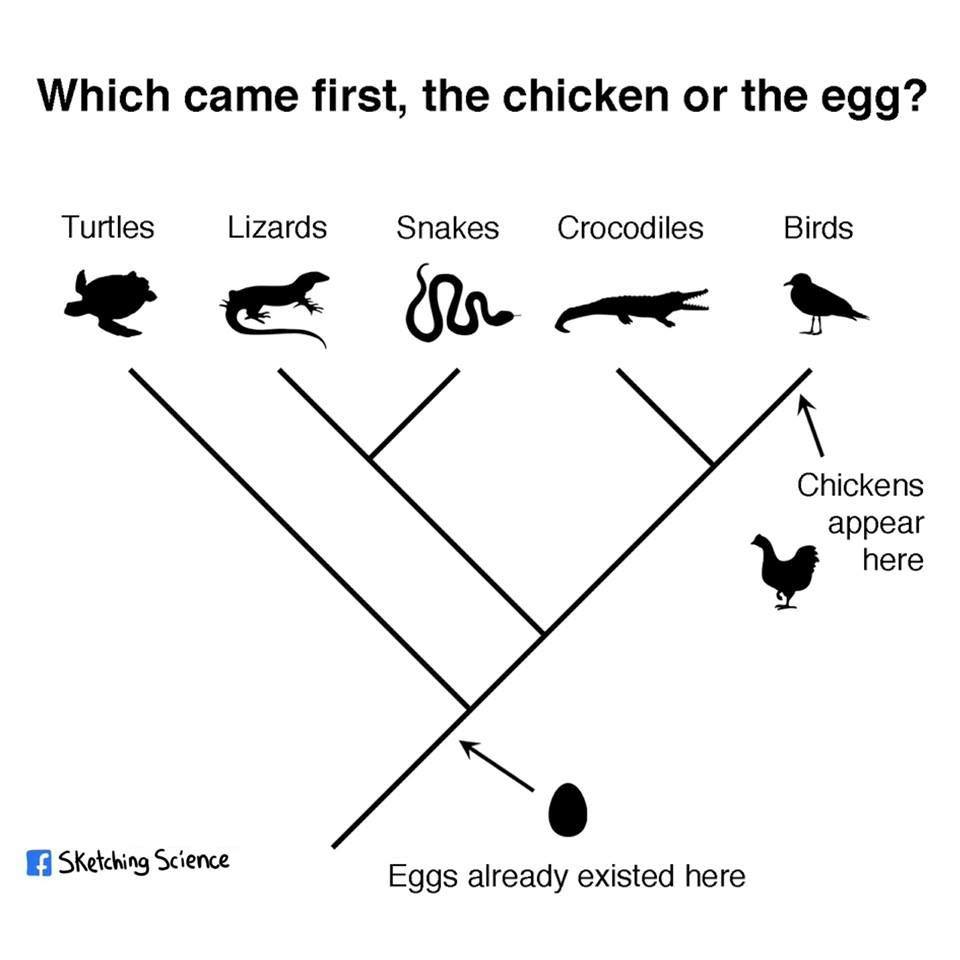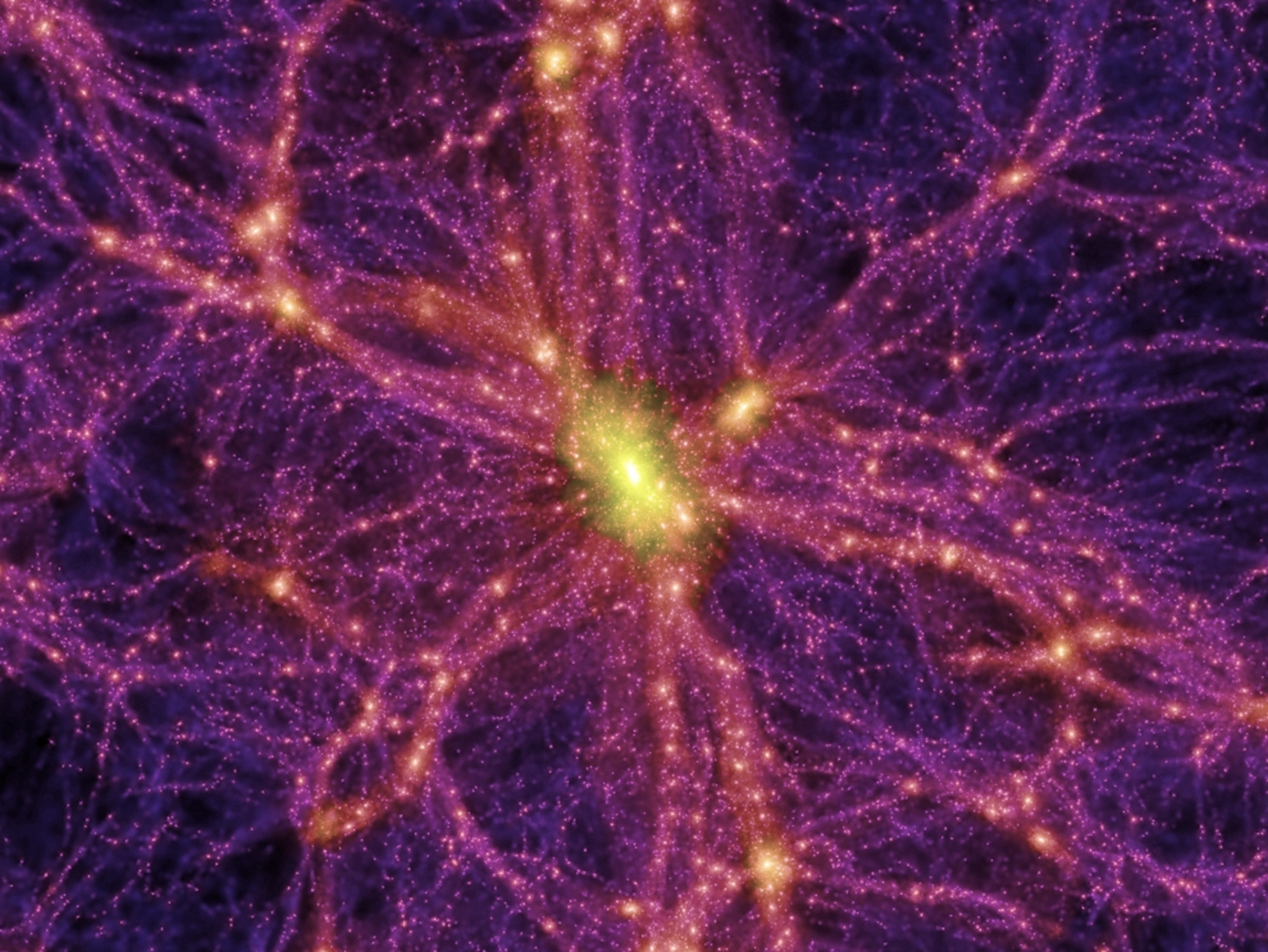The evolution of the chicken or egg poses a fascinating dilemma that is connected to the intricate dance of life’s biochemical processes, particularly in relation to oxygen production through photosynthesis and its consumption via aerobic metabolism. This captivating question takes us back to the Great Oxidation Event, an era that fundamentally reshaped the Earth’s atmosphere and enabled advanced life forms to thrive. As researchers explore the evolutionary biology of life, discovering compounds like methyl-plastoquinone provides critical insights that blur the lines between the capabilities of ancient bacteria and the functions of modern animals and plants. Understanding these connections reveals not only how oxygen became pivotal for life but also highlights the evolutionary path that led to diverse metabolic systems we observe today. In essence, the chicken or egg debate sheds light on profound evolutionary transitions, intricately linked to our planet’s thriving ecosystems.
At the heart of the chicken-or-egg conundrum lies a complex interplay between life forms that produce oxygen and those that depend on it for survival. This discussion extends beyond mere speculation and delves into the realm of evolutionary chemistry, where biochemical pathways and metabolic processes intersect. Insights drawn from studies on oxygen-generating organisms, such as cyanobacteria, and their relationship to early aerobic life highlight the evolutionary adaptations that allowed ancient organisms to thrive amidst changing environmental conditions. By examining the evolutionary trajectory of metabolic pathways, such as photosynthesis and aerobic respiration, scientists can unravel the fundamental questions surrounding life’s origins. The exploration of evolutionary biology not only enhances our understanding of these processes but also reflects the interconnectedness of all living systems.
The Great Oxidation Event: A Pivotal Moment in Evolution
The Great Oxidation Event (GOE) was a significant turning point in the history of our planet, occurring around 2.3 to 2.4 billion years ago. It marked the period when cyanobacteria began producing large quantities of oxygen through photosynthesis, dramatically altering the Earth’s atmosphere. This influx of oxygen not only encouraged the evolution of aerobic organisms but also laid the foundation for more complex life forms. The implications of this event resonate through the annals of evolutionary biology, as it fundamentally changed the conditions under which life could thrive.
During the GOE, the rise of oxygen levels allowed organisms to develop sophisticated metabolic pathways, paving the way for aerobic respiration to become the dominant energy-generating process. The interplay between photosynthesis and aerobic metabolism during this time presents a fascinating puzzle for scientists interested in evolutionary biology, as the adaptations required to exploit oxygen’s presence must have evolved in tandem with its production. This dual evolution signifies a crucial phase in the chicken or egg question of whether life forms developed the capacity to utilize oxygen before or after its abundant production.
Methyl-Plastoquinone: A Clue to Evolutionary Biology
Methyl-plastoquinone represents a groundbreaking discovery in the study of evolutionary biology. It serves as a biochemical bridge interconnecting the processes of photosynthesis and aerobic metabolism. Initially identified as a derivative of quinone found in certain nitrogen-utilizing bacteria, this molecule suggests that some organisms had already developed mechanisms to utilize oxygen long before the GOE. This finding challenges traditional views by positing that the capacity for aerobic life could have coexisted with early forms of photosynthetic organisms, emphasizing the complexity of evolutionary relationships.
The discovery of methyl-plastoquinone not only contributes to our understanding of how life adapted to increasing oxygen levels but also enhances our knowledge of metabolic evolution. As researchers delve deeper into its properties and functions, it may reveal more about how life has thrived under varying environmental conditions. Ultimately, studying such molecules can illuminate the evolutionary pathways taken by early life forms and their adaptations to Earth’s dynamic atmosphere.
Photosynthesis and Aerobic Metabolism: The Dynamic Relationship
Photosynthesis and aerobic metabolism are two fundamental processes that underscore nearly all life on Earth today. Photosynthesis allows organisms like plants and algae to convert sunlight into energy while releasing oxygen as a critical byproduct. This process is not only vital for plant life but also sustains aerobic organisms, including humans, by providing them with the oxygen necessary for survival. Consequently, the interdependence between these metabolic pathways is a key element of ecological balance, illustrating the intricate connections that define ecosystems and evolutionary processes.
However, the relationship between oxygen production through photosynthesis and its consumption via aerobic metabolism presents an intriguing paradox in evolutionary biology. The question of which process emerged first sparks curiosity and research. Some scientists propose that aerobic metabolism might have existed even before cyanobacteria significantly increased atmospheric oxygen levels. This hypothesis opens new discussions about early life forms and challenges previously held notions, advocating for a more nuanced understanding of the evolution of life on Earth.
The Role of Quinones in Metabolic Processes
Quinones are a class of aromatic compounds essential for various biological functions, playing a vital role in electron transport chains within cells. These molecules are fundamental to both photosynthesis and cellular respiration, making their study critical in understanding metabolic processes across different life forms. The existence of varied quinone structures points to evolutionary adaptations that have enabled organisms to thrive in diverse environments, illuminating the connections between metabolic pathways and evolutionary biology.
With the advent of research pinpointing methyl-plastoquinone, scientists can investigate a previously overlooked aspect of life’s evolution. This molecule represents a potential link between aerobic and anaerobic metabolism, showcasing the adaptability of early life forms as they evolved to utilize available resources. This exploration into quinone diversity might reveal further insights into the biochemical foundations of metabolism and the evolutionary transitions that shaped modern life.
Biochemical Innovations During the Evolution of Life
The evolution of life on Earth has been marked by various biochemical innovations that have allowed organisms to thrive under changing environmental conditions. Innovations such as the ability to harness light for energy through photosynthesis and the development of aerobic metabolism for efficient energy conversion exemplify the significant adaptations required for survival. These advancements highlight the dynamic nature of evolution, where various life forms evolve intricate biochemical pathways that facilitate successful interaction with their surroundings.
Moreover, the discovery of unique molecules like methyl-plastoquinone exemplifies how ancient biochemical systems can persist and adapt over billions of years. Such findings affirm that early life forms possessed a level of sophistication that enabled them to navigate the challenges posed by their environment. The biochemical innovations that characterized this evolution stand as a testament to the resilience of life, underscoring the concept that the pathway to complexity is shaped by evolutionary pressures and the molecules that embody them.
Evolutionary Biology: Unraveling the Complexity of Life
Evolutionary biology is a field dedicated to exploring the origins and changes in the diversity of life through time. It examines how life forms adapt to their environments, often leading to the emergence of new species through mechanisms such as natural selection and genetic drift. Understanding the evolutionary relationships between organisms necessitates an appreciation of the biochemical and molecular components underlying these processes. As scientists delve deeper into the molecular evidence of life’s history, they reveal intricate narratives connecting living beings to their ancient predecessors.
Recent findings, such as those surrounding methyl-plastoquinone, challenge conventional interpretations, encouraging researchers to rethink established evolutionary timelines. They underline the necessity of integrating molecular biology with evolutionary studies to achieve a thorough understanding of how life has evolved. By unwrapping the biological complexities that shaped life’s evolutionary journey, scientists can gain new perspectives on how organisms adapt and thrive, providing critical insights into the nature of life itself.
The Interconnectedness of Life Forms: An Evolutionary Perspective
The interconnectedness of life forms illustrates the profound and complex relationships that govern ecosystems. From the microscopic bacteria to the largest terrestrial organisms, every life form plays a specific role within its biome. Evolutionary biology emphasizes these connections, showing how life forms evolve not in isolation but through intricate interactions with their environment and one another. The shared biochemical pathways, such as those involving quinones, underscore the common ancestry that binds disparate organisms, highlighting the unity of life.
Analyses into the evolutionary adaptations of various species, particularly regarding metabolic processes like photosynthesis and aerobic respiration, unveil how life has diversified in response to atmospheric changes. The research surrounding methyl-plastoquinone is a prime example of this interconnectedness; it not only links processes that were presumed to be separate but also invites reflection on the simultaneous evolution of life and its dependence on environmental factors. Such insights contribute to a broader understanding of collective evolutionary history.
Bridging Past and Present: Lessons from Evolution
The history of life on Earth presents remarkable lessons about resilience, adaptation, and interdependence. By studying ancient molecules and metabolic pathways, we gain insights into how life has overcome challenges over billions of years. The ongoing investigation of quinones and their role in metabolic processes draws parallels between ancient and contemporary life forms, underscoring the significance of preserving biodiversity today. Recognizing these connections emphasizes the importance of ecological stewardship to prevent disruptions that could impact life’s intricate web.
Moreover, deciphering the evolutionary pathways that have led us to the present can illuminate approaches to future biotechnological innovations. As researchers continue to draw on evolutionary biology principles, they can develop strategies to harness natural processes for solving contemporary issues. The legacy of evolutionary adaptations serves as a guiding framework, inspiring us to innovate sustainably while respecting the interconnections among diverse life forms as we navigate the challenges of an ever-changing world.
The Chicken or Egg Dilemma: Insights into Evolutionary Origins
The classic chicken or egg dilemma encapsulates the broader quandary of evolutionary origins: what came first, the ability to produce oxygen or the ability to consume it? This question invites exploration into the interdependencies of metabolic pathways, providing a case study in understanding evolutionary biology concepts. The ongoing discussion spurred by recent discoveries challenges previous assumptions, revealing a tapestry of co-evolution where both processes may have arisen in tandem.
Furthermore, this dilemma highlights the importance of adopting a holistic view of evolution. As scientific inquiry unveils new evidence, like that of methyl-plastoquinone, it becomes clear that both aerobic and photosynthetic processes were essential to the survival of early life forms. By examining this interplay, we can better appreciate how complex metabolic networks arose, contributing to life’s diversification and emphasizing the importance of collaborative evolution in shaping the biosphere.
Frequently Asked Questions
What is the significance of the chicken or egg evolution debate in evolutionary biology?
The chicken or egg evolution debate is significant in evolutionary biology as it encapsulates the fundamental question of causality in evolution. It explores whether the ability to produce oxygen through photosynthesis or the ability to consume oxygen via aerobic metabolism came first. This question relates to the evolutionary timeline and milestones like the Great Oxidation Event, marking essential developments in life forms.
How does the discovery of methyl-plastoquinone relate to chicken or egg evolution?
The discovery of methyl-plastoquinone is pivotal to the chicken or egg evolution question as it suggests a possible link between organisms that generate and consume oxygen. Researchers found this molecule in a nitrogen-utilizing bacterium that hints at a pre-existing ability to utilize oxygen, potentially existing alongside early photosynthesis, challenging the linear progression of these processes.
What role did the Great Oxidation Event play in the chicken or egg debate?
The Great Oxidation Event, occurring around 2.3 to 2.4 billion years ago, is a critical period in the chicken or egg debate. It marks the time when cyanobacteria began producing significant oxygen through photosynthesis, enabling aerobic metabolism. This era is central to understanding the synchronicity of oxygen generation and consumption in evolutionary history.
Can the findings about methyl-plastoquinone reshape our understanding of photosynthesis and aerobic metabolism’s evolution?
Yes, the findings about methyl-plastoquinone can reshape our understanding of photosynthesis and aerobic metabolism’s evolution. They indicate that certain bacteria may have possessed aerobic capabilities before cyanobacteria developed extensive photosynthetic oxygen production, suggesting that the evolution of these processes may have occurred simultaneously rather than sequentially.
How does studying chicken or egg evolution contribute to our knowledge of aerobic metabolism?
Studying the chicken or egg evolution question enhances our understanding of aerobic metabolism by revealing how early organisms adapted to utilize oxygen. Insights into biochemical mechanisms, like those involving quinones, help us appreciate the sophistication required for aerobic life, which has significant implications for evolutionary biology and the development of complex life forms.
Why is the chicken or egg question relevant in discussions about metabolic pathways?
The chicken or egg question is relevant in discussions about metabolic pathways because it highlights the interdependence of oxygen production and consumption mechanisms. Understanding whether photosynthesis or aerobic respiration emerged first provides critical insights into evolutionary adaptations, the evolution of life forms, and the ecological balance that supports aerobic metabolism.
In what ways are modern human mitochondria linked to early evolutionary processes regarding oxygen use?
Modern human mitochondria are linked to early evolutionary processes regarding oxygen use through the evolutionary heritage of quinones, which play a role in cellular respiration. The distinctions between quinone structures in human cells compared to those in plants reflect the adaptations and evolutionary pathways that emerged as organisms learned to utilize oxygen more effectively, as seen in the context of the chicken or egg evolution debate.
| Key Points |
|---|
| The research addresses the age-old question of whether oxygen production by photosynthesis or oxygen consumption through aerobic metabolism came first. |
| Felix Elling, a lead researcher, discovered a unique molecule in a bacterium while researching unrelated topics. |
| The molecule, methyl-plastoquinone, is a new type of quinone that may provide a link between photosynthesis and aerobic respiration. |
| The findings indicate that some bacteria may have utilized oxygen before cyanobacteria started releasing it, suggesting simultaneous evolution. |
| This research enhances understanding of the Great Oxidation Event, which occurred around 2.4 billion years ago, when oxygen became abundant. |
| The study emphasizes the complexity of biochemical processing systems for oxygen within cells. |
| Quinone structures play a vital role in cellular functions and the evolution of aerobic metabolism in living organisms. |
Summary
The chicken or egg evolution debate concerning the origins of aerobic metabolism and photosynthesis presents a fascinating intersection of biochemistry and evolutionary biology. Recent discoveries, particularly involving the molecule methyl-plastoquinone, suggest that the capabilities for utilizing oxygen and producing it may have evolved simultaneously rather than in a linear sequence. This research sheds light on the intricate systems needed for life to flourish in oxygen-rich environments and the evolutionary advancements that occurred during the Great Oxidation Event. Understanding chicken or egg evolution enhances our knowledge of how early life adapted to change, allowing for a diverse range of organisms to thrive.



